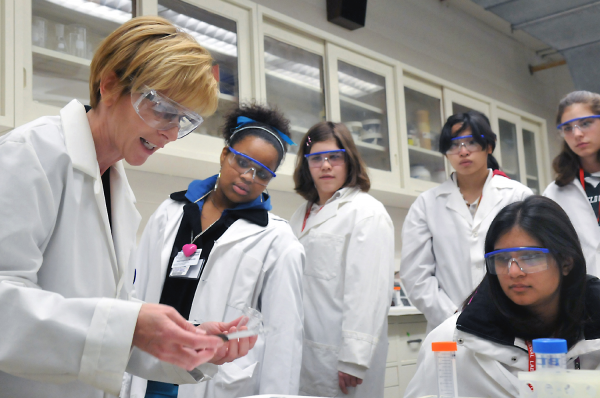A Woman's Place is in the Lab
Johnathan George
For example, a recent study carried out by business school professors at Columbia University, Northwestern University, and the University of Chicago finds a gender bias is still present at the hiring level for STEM roles[1]. Hiring managers, both male and female, were asked to rate candidates based on their completion of simple mathematical tasks. In the case where the managers were provided with no information other than appearance, men were twice as likely to be hired for a mathematical task than women. If a woman’s performance on the task was
equal to that of a man, the man was still 1.5 times more likely to be hired for the role. The authors also concluded that, in an interview scenario, males tend to overestimate future performance, whereas women underestimate. Employers do not appreciate the extent of this bias, nor do they compensate for it at the point of hire.
So what can be done? In my opinion, the source of prejudice is, in fact, the ongoing underrepresentation of women in STEM. Last month, the AIP Statistical Research Center released the results of a recent survey of US-based PhD graduates[2]. 2012 saw an increase of 131% in the number of women completing PhDs in Physics, compared with 2001. However, this accounts for just 20% of the total Physics PhD graduates in 2012. While this upwards trend is encouraging, it’s clear that women are still underrepresented in the field and thus the graduate job market.
To increase female participation, there is an onus on women in the field to foster change, to take action and become involved. We need to communicate more, both with each other and with our male colleagues. This can mean outreach to Middle and High Schools, or your presence at an industry booth at a career fair. You can show your support through mentoring programs and local and national societies and networks. Involvement is not limited to women professionals – you don’t have to be female to recognize the advantages of a diverse workforce and to be a supporter of equality in the workplace. With increased equality, more women will choose to study STEM subjects, no longer in fear of a commitment to a career where they must struggle against unfair prejudice.
Luckily, we are not starting from scratch. MWOSA (Minorities and Women in OSA) and SPIE Women in Optics provide seminars and networking opportunities for female scientists and engineers in optics. The establishment of WiSTEE Connect (Connecting Women in Science, Technology and Entrepreneurship) in 2013 provides an opportunity for connectivity and mentorship among women in Science and Engineering. I encourage you to educate yourself on these groups, as well as others on your campus or in your workplace, and support their efforts in building a more diverse and equal optics community.
What does it mean to be a female optical scientist today? For me, it means I feel part of an established, vibrant, and growing community. What will it be like tomorrow? The trajectory will likely have its peaks and valleys, but we have every reason to be optimistic about the future – because it is ours to shape.

[1]
Reuben, Sapienza, and Zingales, “How stereotypes impair women’s careers in
science,” PNAS, March 2014.
[2]
Mulvey and Nicholson, “Trends in Physics PhDs,” AIP Statistical Research
Center, February 2014.
Image credit: Photo by George Joch / courtesy Argonne National Laboratory. http://creativecommons.org/licenses/by-sa/2.0/deed.en
